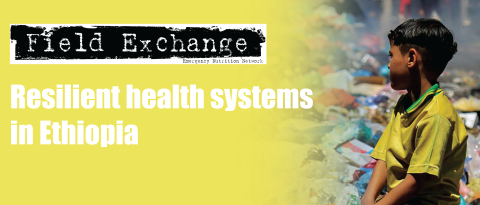The link between tuberculosis and undernutrition
Research snapshot1
Undernutrition increases the frequency, severity and fatality of many infections, including tuberculosis (TB), while infections, in turn, worsen undernutrition. Undernutrition in adults is an under-recognised driver of TB epidemics. Large studies have consistently shown a strong, inverse and exponential relationship between body mass index (BMI) and incidence of TB (Lönnroth et al, 2010). Undernutrition contributes most to incidence of TB in high-burden countries with a lower HIV prevalence, such as those in Southeast Asia. Around 55% of the annual incidence of TB (more than one million new cases) in India is attributable to undernutrition (Bhargava, 2014); modelling suggests that reducing adult undernutrition could cut new cases by up to 71% in certain states (Oxlade, 2015).
Undernutrition is a widely prevalent comorbidity in people with TB and increases the risk of more severe disease, death, malabsorption of anti-TB drugs and relapse after cure. The recent World Health Organisation (WHO) guideline made recommendations for nutrition support in patients with TB, for action (WHO, 2013). WHO’s End TB strategy aims to reduce the incidence of TB by 90% by 2035. One third of the world’s population are estimated to have latent TB infection, but with well functioning, cell-mediated immunity, only 5-15% will develop active TB over a lifetime. To meet the ambitious WHO target, undernutrition must be tackled, as well as other risk factors for progression from latency to active disease.
In German prisoner of war camps during the Second World War, British soldiers given a Red Cross ration of 1,000 calories and 30g protein in addition to the poor camp diet had a 93% lower incidence of TB than their Russian counterparts, who received no ration – a risk reduction comparable to that of an effective vaccine. The new vision of TB control should also focus on the measurable, preventable and reversible co-epidemic of undernutrition.
Footnotes
1Bhargava A. (2016). Undernutrition, nutritionally acquired immunodeficiency, and tuberculosis control. British Medical Journal, December 2016, Vol. 2.
References
Lönnroth,K., Williams, B.G., Cegielski, P., Dye, C. (2010). A consistent loglinear relationship between tuberculosis incidence and body mass index. Int J Epidemiol 2010;39:149-55.doi:10. 1093/ije/dyp308pmid:19820104.
Bhargava, A. ,Benedetti, A., Oxlade, O., Pai, M., Menzies, D. (2014) Undernutrition and the incidence of tuberculosis in India: national and subnational estimates of the population-attributable fraction related to undernutrition. Natl Med J India 2014;27:128-33.pmid:25668081.
Oxlade, O., Huang, C.C., Murray, M. (2015) Estimating the impact of reducing under-nutrition on the tuberculosis epidemic in the central eastern states of India: a dynamic modelling study. PLoSOne 2015;10:e0128187. doi:10.1371/journal.pone.0128187pmid:26046649.
World Health Organization. (2013) Guideline: nutritional care and support for patients with tuberculosis. WHO, 2013.


